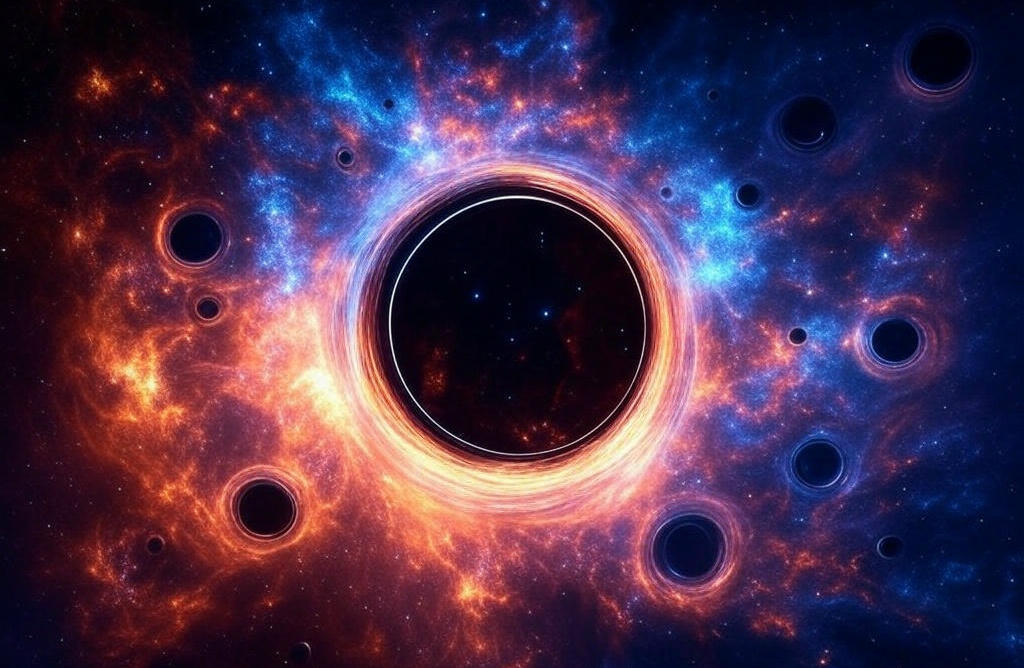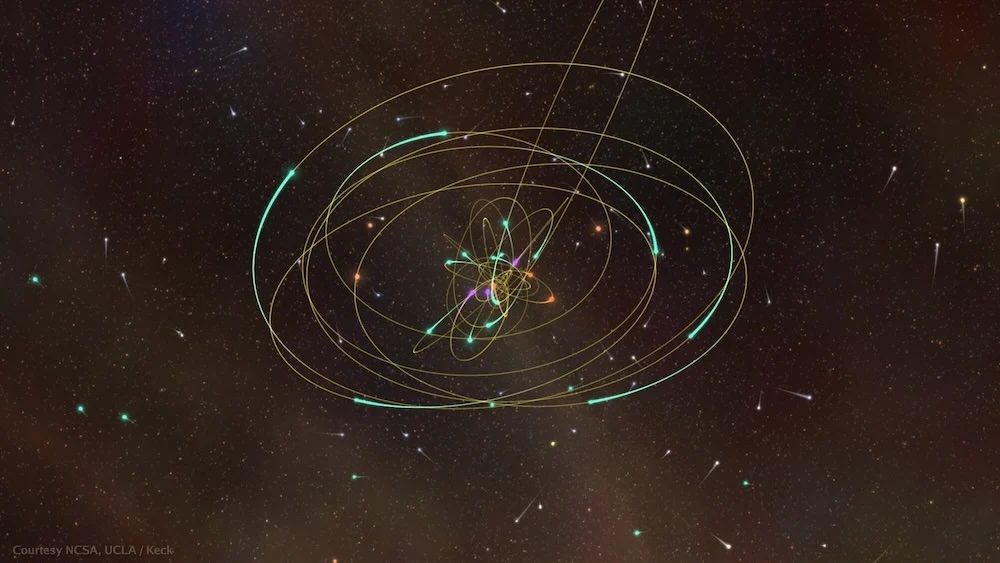In the very center of our galaxy, where the supermassive black hole Sagittarius A* (Sgr A*) lurks, the most extreme processes in the Universe take place. This region resembles a cosmic vortex filled with young stars, glowing gas, dust clouds, and invisible stellar mass black holes. But observing this region in visible light is impossible due to dense gas and dust clouds, so astronomers use infrared and radio telescopes to look through these natural obstacles.

Cyclical process of star “grinding”
For a long time, it was thought that there were about 300 black holes in the vicinity of Sgr A*. However, a new study in the journal Astronomy & Astrophysics surpasses these estimates by proposing a revolutionary “stellar grinder” model. Its point lies in the unique conditions of the galactic center: the extreme density of gas and dust promotes the mass birth of O- and B-type giant stars. These giants live bright but extremely short lives ‒ after a few million years they explode as supernovae, leaving behind black holes. The ejected matter becomes building material for new stars, starting a cyclic process.

Each new cycle increases the number of black holes, turning the region into a cosmic minefield. According to the model, collisions between stars and black holes become inevitable. Such interactions “grind” stars, releasing energy for the accelerated birth of new generations of luminaries. That is why this vicious circle has been metaphorically called the “galactic grinder”.
Incredible density of black holes
If the theory is correct, the density of black holes at the center of the Milky Way is as high as 100 million per pc3 (cubic parsec) ‒ millions of times greater than previous predictions. The proof is provided by analyzing the statistical probability of a star meeting a black hole. The largest O-type stars are rare here, indicating that they are collapsing, while smaller B-type stars predominate because of their lower collision risk.
Interestingly, the model also explains the phenomenon of hypervelocity stars, which rush at speeds of more than 1.6 million km/h. Their acceleration could have occurred during gravitational maneuvers near black holes in the galactic core.
Although the study requires further confirmation, it opens new horizons for understanding the evolution of galaxies. Perhaps this “meat grinder” determines the fate of stars in the most extreme conditions of the Universe.
Earlier we reported on how big black holes could be.
According to Science Alert


